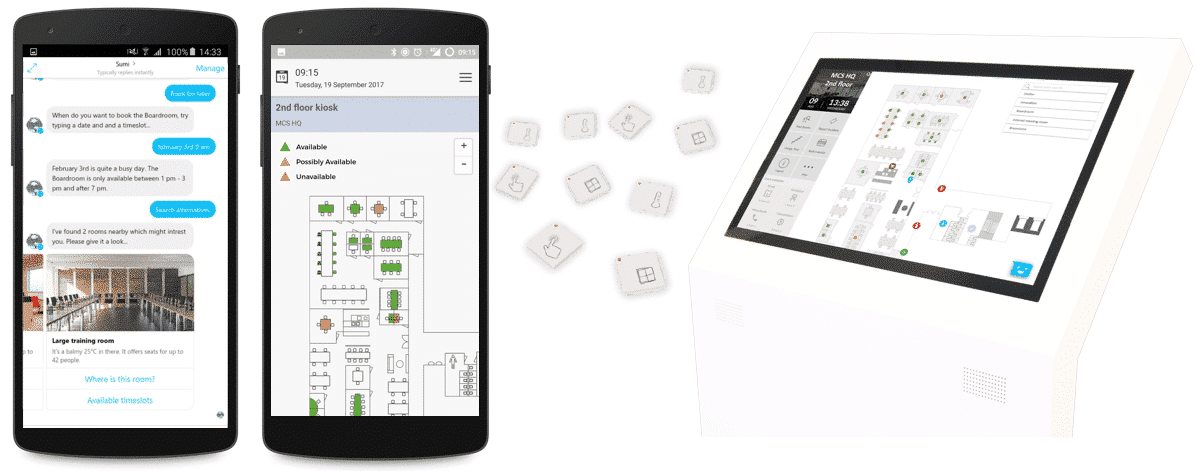Before the trend of Activity Based Working (ABW) took hold, ‘cubicle culture’ dominated the office landscape for decades. Picture rows of beige cubes in a minimally windowed workplace with harsh fluorescent lighting. These bland, soul-sapping environments — designed to cut space costs — encouraged monotonous styles of working. Moreover, the dominant technology tools of the era (desktop computer, landline phone) kept office workers tethered to their desks.
Today routine jobs are rapidly disappearing, work is increasingly digital, and creativity and collaboration have become more important. Open-plan offices were a first response to the changing nature of work, but one with serious drawbacks. They are designed to foster collaboration and inspire creativity, but people working in them suffer from frequent interruptions, noise, and difficulties to concentrate on the task at hand. They are overwhelmed by stimuli and cannot escape them, which is especially bad for introverts. Think about it: what is the point of attracting (and paying) great talent to then put them in a space where they are constantly distracted and cannot get any serious work done?
For this reason, many companies are turning to Activity Based Working. This is a ‘hybrid’ model that offers a variety of settings to support a range of different activities and work styles.
Activity Based Working: what it is and what it’s not
Let’s start with what it is not. Activity Based Working is not:
- Working in trendy new offices with plenty of gimmicks
- Open-plan offices or hot-desking (although some features may be present)
- Getting as many people as possible to work from home
- Cramming as many people as possible into little space
The key concept behind shared workspaces is that employees are no longer tied to a desk. They have no assigned workstations anymore but instead, have access to dedicated facilities that offer the best circumstances for a range of activities.
It’s a bit like your home if you think about it. At home, you and your family use each room for specific activities. Some rooms are quiet spaces, some are private, some serve specific tasks (like preparing food), and others are areas where you meet and talk.
Just like in your home, a well-designed workplace should support your regular activities throughout the day. Therefore, it’s important to offer a variety of spaces, for example:
- Open spaces to encourage interactions with co-workers
- Concentration rooms for focused work
- Huddle rooms for unscheduled team meetings (typically accommodating up to 5 people)
- Larger meeting rooms for planned meetings
- Phone booths
- Break-out areas for informal meetings away from the bustle of the workplace (consider making participants stand up to stop sessions extending too long)
- Comfortable spaces to relax and have casual conversations with colleagues
Alongside the physical workplace, employees also need an effective virtual working environment, providing instant access to all relevant information, anywhere, anytime. As well as the tools to efficiently collaborate with co-workers, wherever they may be.
Space consumers
Activity Based Working gives employees a range of options to choose from. As a result, they become consumers of space – shopping around and actively seeking out the space that best supports their work. User-friendly, intuitive technology tools can further boost the performance of an activity-based working environment and the satisfaction of the users. More specifically, organizations are already deploying IoT-related technologies to optimize how people interact with flexible work environments.
Activity Based Working Software supports space optimization
With people working on different floors and in a variety of spaces, it’s virtually impossible to get a clear and objective view of actual space usage over time. Fortunately, there are now unobtrusive wireless sensors that can detect presence in real-time. When this sensing data is sent to the cloud and visualized on floor plans and dashboards, it helps understand actual workplace usage.
As a result, it enables businesses to ensure the right balance between desk availability and space efficiency and to re-balance the environment as the workforce shrinks or expands. Learn how insurance multinational AXA uses space monitoring in its activity-based workplace in the company’s Brussels HQ.
Activity Based Working software improves workplace comfort
There is a growing body of evidence that links thermal comfort and air quality to well-being and productivity. Here as well, the IoT can be helpful to monitor conditions and detect anomalies. Not only do wireless sensors monitor temperature, humidity, and CO2, but they can also measure the concentration of volatile organic compounds (VOCs) in the workplace. Coupled with visualization and analytics tools, this helps workplace leaders keep everyone healthy and comfortable.
Activity Based Working software offers workplace guidance
Once companies have occupancy sensors in place, they can also make this data available in real-time to offer personalized assistance. Through touchpoints like kiosks or mobile apps, building users immediately see free spaces on interactive floor plans. It helps them navigate the space without losing time, especially when the workplace is spread over several floors.

A culture of empowerment
Organizations increasingly adopt Activity Based Working to create stimulating conditions for knowledge workers. In doing so, they aim to optimally support a broad range of activities, from deep thinking to knowledge sharing and collaboration. Which leads to better ideas, more insightful decision-making, faster problem-solving, and ultimately more satisfied customers.
Are you considering moving from an assigned-seating workplace model to an agile working environment? Or maybe you have already introduced flexible working, but want to improve the current workplace environment? Follow the example of companies like AXA and introduce agile working supported through smart technologies.






